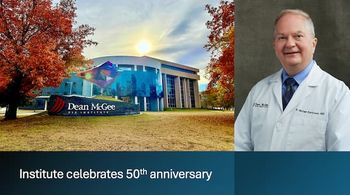
The emerging biosimilars: highlights on use in retinal diseases
The regulatory process is building confidence that the product is good and can be used safely.
Reviewed by Carl Regillo, MD, FACS, FASRS; and Jennifer Lim, MD, FARVO, FASCRS
Retina specialists, Carl Regillo, MD, FACS, FASRS, and Jennifer Lim, MD, FARVO, FASRS, provide insights into biosimilars, overcoming barriers to biosimilar uptake, and the impact of biosimilars on retinal eye disorders.
Differentiating biosimilars from reference drugs
Biosimilars are drugs produced by biologic living cells. They differ from a generic drug created by following a “recipe” to create the same structure, Lim said.
To obtain the same effect as a conventional drug, the biosimilar has to be reverse-engineered and a process can take decades, but the path to FDA approval is faster than for conventional drugs: only 1 equivalency study to the reference drug and a phase 3 clinical trial are required, she explained.
Postmarket surveillance
One biosimilar for ranibizumab (Lucentis; Genentech), the reference drug, has been approved for use in ophthalmology.
The FDA holds biosimilars to a high bar regarding purity, safety, and efficacy. The drugs will be scrutinized for development of intraocular inflammation and other side effects. The biosimilars are evaluated for the side effects being reported and compared to the reference drug and to ascertain that the adverse effects caused by the reference drug are not attributed to the biosimilar or vice versa because the names are similar.
An interesting aspect of biosimilars, Regillo noted, is that they can evolve over time because they are created from living cells. Similar to ranibizumab and aflibercept (Eylea; Regeneron Pharmaceuticals) tested in clinical trials, the drugs over time are not necessarily identical to what is being used now because these processes change.
Biosimilars in ophthalmology
Oncologists and rheumatologists have been using biosimilars for a while and they were readily adopted. However, there is a learning curve for ophthalmologists.
Lim reported that after familiarizing herself with the drugs and their development, she feels comfortable after evaluating the equivalence and safety studies. In addition, the FDA requires careful reporting and adherence to the standards.
Moreover, Lim advised retina specialists to read about biosimilars and educate their peers regarding comfort using the drugs.
Clinical trials
The FDA approval of SB11 (Byooviz; Samsung Bioepis and Biogen) for neovascular age-related macular degeneration (AMD) was based on changes in the best-corrected visual acuity and central subfield thickness at 8 weeks compared with the reference drug, which were similar. Drug-antibody testing also showed no significant difference between the 2 products.
The major clinical trials also showed very low rates of intraocular inflammation, 0.9% for SB11 vs 0% for ranibizumab, Lim explained.
A second biosimilar in a phase 3 equivalency study is headed toward approval. The COLUMBUS-AMD study of FYB201 (Ranivisio; Bioeq) compared to ranibizumab, the reference drug, found no significant differences in vision/central subfield changes.
Indications and administration
Lim advised against ophthalmic use of biosimilars approved for systemic use. A biosimilar for bevacizumab (Avastin; Genentech) is available, but the excipients differ and the drug was never tested in the eye. Without proper testing, the experience in the eye could be disastrous.
“The FDA standards for product safety and purity when used intravenously or systemically differ from that for the eye,” Regillo explained. “What may be tolerated intravenously may not be in the eye. The American Academy of Ophthalmology issued a statement not to use a bevacizumab biosimilar designed for systemic administration in the eye.”
Another biosimilar distinction is that once a drug has proven equivalency to the reference drug, it then gains the indications that the reference drug has, ie, SB11 has proven equivalency to ranibizumab 0.5 mg and in addition to neovascular AMD can treat retinal vein occlusion and myopic choroidal neovascularization, but not diabetes because ranibizumab 0.3 mg was approved for diabetes in the US.
Practical Implications of Increased Biosimilars Use
An upside to using biosimilars is the potential cost savings of 10% to 20%.
In addition, the biosimilar is approved for common indications and therefore used often. With the introduction of other biosimilars that are shown to be equivalent, the prices may decrease.
Lim and Regillo both pointed out that patient acceptance of biosimilars will take time as the equivalency and safety are reinforced and prices decrease.
The landscape will change but the uptake will be slow initially as patients and physicians become comfortable. Patient education is a key factor.
The future of biosimilars
Lim and Regillo also expressed confidence about the technology’s future .
“The regulatory process is significantly stringent to provide confidence that biosimilars are equivalent to reference drugs,” she said. “My take-home message to physicians: The data are strong and reasonable that this biosimilar drug is equivalent to the reference product.”
Moreover, Regillo added that the process helps to build confidence that the product is good and can be used safely.
“Biosimilars have been around for some time and there’s a good mechanism in place to prove equivalency and for proper surveillance of the products in practice,” Regillo concluded.
Carl Regillo, MD, FACS, FASRS
Regillo is chief of the retina service at Wills Eye Hospital and professor of ophthalmology, Thomas Jefferson University, Philadelphia, Pennsylvania. He has no financial disclosures related to this content.
Jennifer Lim, MD, FARVO, FASRS
Lim is chair in ophthalmology for research in the aging eye, and director, retina service, University of Illinois Chicago. She has no financial disclosures related to this content.
Newsletter
Don’t miss out—get Ophthalmology Times updates on the latest clinical advancements and expert interviews, straight to your inbox.
















































.png)


